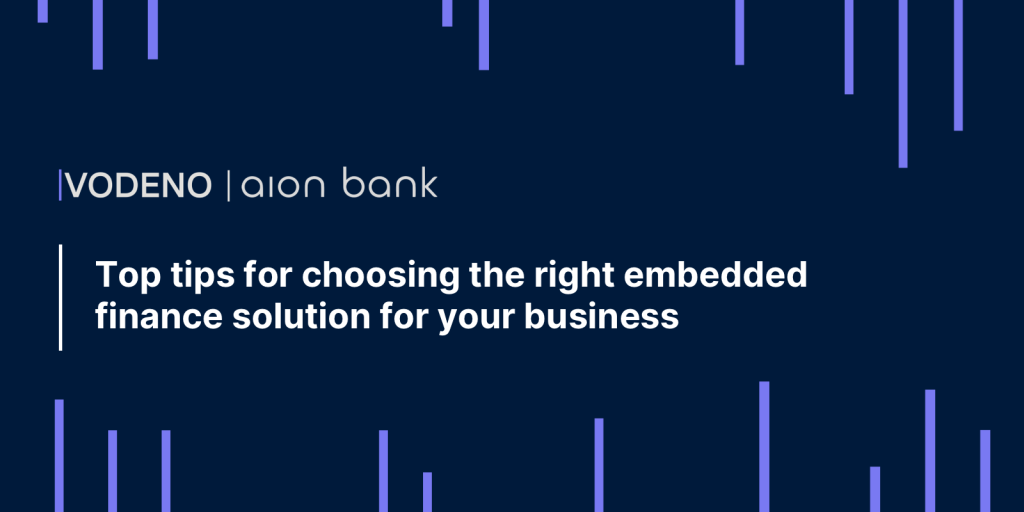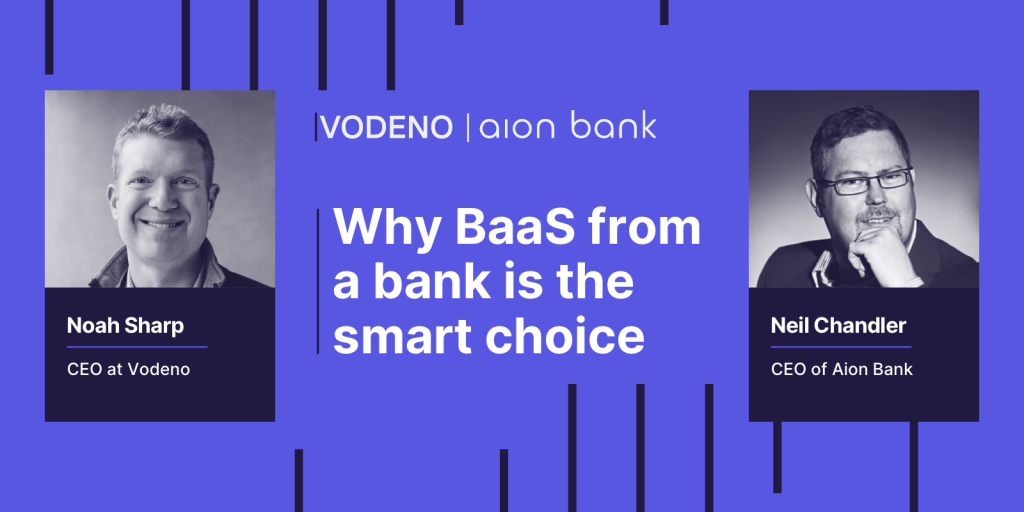Jean-Jacques Le Bon, Vodeno’s Chief Strategy and Product Officer
Embedded finance can provide a lot of benefits across different sectors – just take a look at how it’s transforming the retail, marketplace, and mobility sectors.
But to ensure the success of each embedded finance project, a considered approach is required. Banking-as-a-Service (BaaS) adoption is not as straightforward as the ‘as-a-service’ moniker suggests – it’s not an out-of-the-box technology solution. It’s far more strategic, needing a sharp focus on product-market fit, the tech stack, and regulation and compliance. The right BaaS provider should be able to navigate their client through the entire life cycle of the BaaS journey, which makes choosing the right provider essential.
Here are our top tips for choosing the right embedded finance solution for your business:
- Understand customer needs

The single most important factor in determining the success of an embedded finance solution is aligning the product to customers’ needs.
Businesses must identify via research: what key challenges their customers face, how these can be solved by integrating financial services into their customer journey, and what benefits they can unlock for their customers through embedded finance.
Merchant financing within marketplaces is a great example of embedded banking solving a clear need. Small businesses have a difficult time accessing credit. For marketplaces, offering a financial solution that addresses this need enables their vendors to sell more goods on their platform. By providing their vendors with upfront funding to produce, buy and sell goods, marketplaces are solving major cashflow headaches for their B2B clients. In turn, those vendors are able to scale more quickly and focus on providing better products to the end user; additionally, the marketplace is more likely to retain the best vendors.
- Understand your business needs

Alongside understanding where your customers’ needs lie, businesses considering embedded finance must also be certain about their desired outcomes from the implementation.
Commercial goals might include:
- Increasing customers’ basket-size
- Reducing drop-off at checkout
- Boosting repeat custom
- Improving the overall user experience
- Creating new revenue streams
A business might be motivated by a combination of these factors, but there must be a clear alignment amongst senior management regarding the expected outcomes their investment in embedded finance will yield.
- Never overlook security and compliance

Embedded finance solutions are banking products, meaning adopters need to ensure that their products are safe and compliant. This means working with a BaaS provider that can deliver cutting-edge technology and also handle regulatory compliance and anti-fraud measures.
Crucially, not all BaaS providers are created equal, particularly where compliance is concerned. For example, some may only be regulated as Electronic Money Institutions (EMI), limiting the financial products they can offer. Others, like Aion/Vodeno, offer a comprehensive range of services based on access to a full banking licence, with end-to-end service with all regulatory requirements handled in the back end.
Finding a BaaS provider that has the expertise and operational ability to take responsibility for compliance and anti-fraud is essential to avoiding issues as businesses scale.
- Go-To-Market is critical, the project is not finished at delivery
The process of successfully launching a financial product to market isn’t as simple as taking a ‘build it and they will come’ approach.

BaaS adopters must be able to effectively communicate the products to their customers, so they understand their value and take advantage of the benefits. Here is where some stumble. Effective communication is crucial not only for driving initial customer adoption but also for fostering long-term customer loyalty.
By clearly conveying the advantages and value proposition of their BaaS services, brands can establish trust, build strong customer relationships, and ultimately cultivate a loyal customer base.
- Start small, then scale
The opportunities of embedded finance are vast, and working with the right BaaS provider will provide a business with access to a full range of financial products and services. But, don’t run before you can walk.
While there might be a plan in place that involves the business deploying multiple embedded finance solutions, it is best to start with one. Try it out. Build the relationship between the business and the BaaS partner. Establish a successful use case. Then scale it.

Starting small will help limit the initial financial outlay required, while still giving the adopting business a sense of what can be achieved. This underlines the importance of working with a strategic BaaS partner, rather than an out-of-the-box tech vendor – embedded finance adopters need a company that will take the time to understand their business and customers, and then help identify where and how embedded finance solutions can best be applied.
Do you need help understanding how Banking-as-a-Service and embedded finance could transform your business? Then get in touch with Vodeno today.



